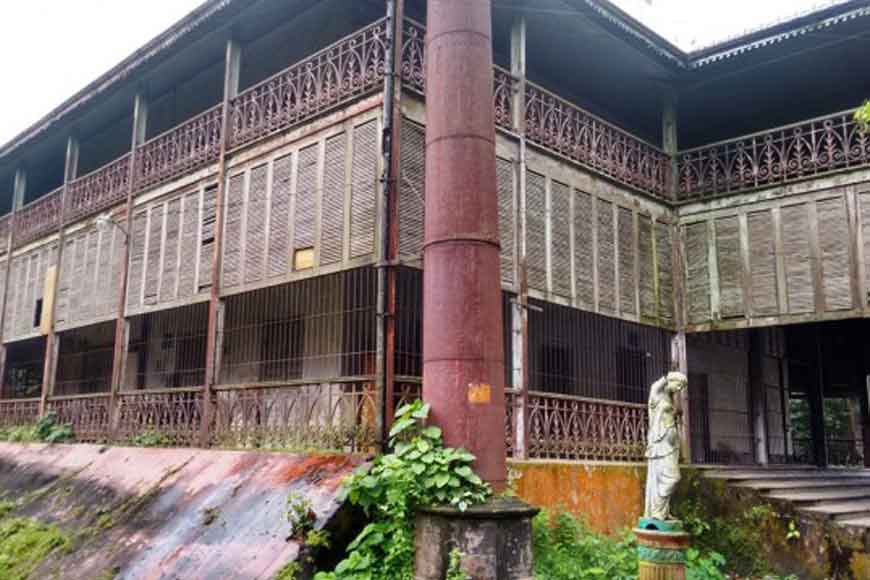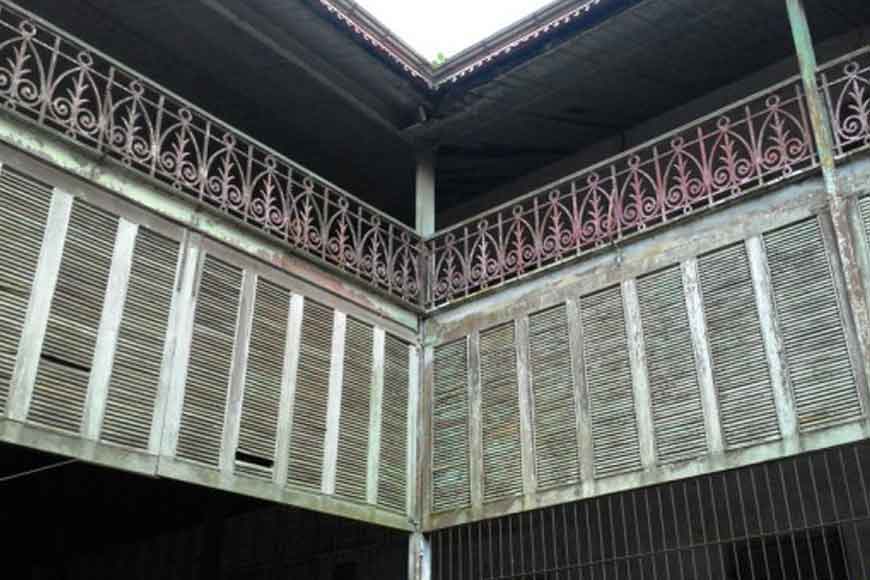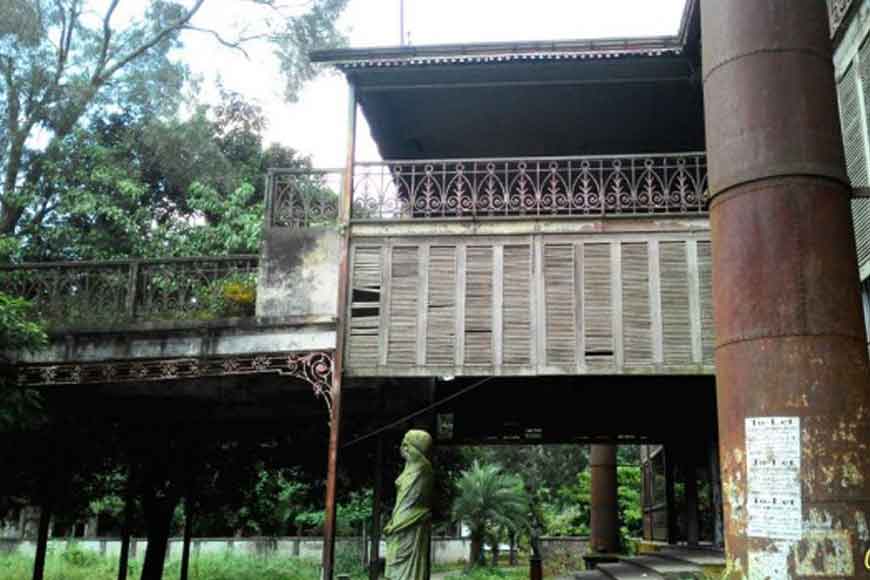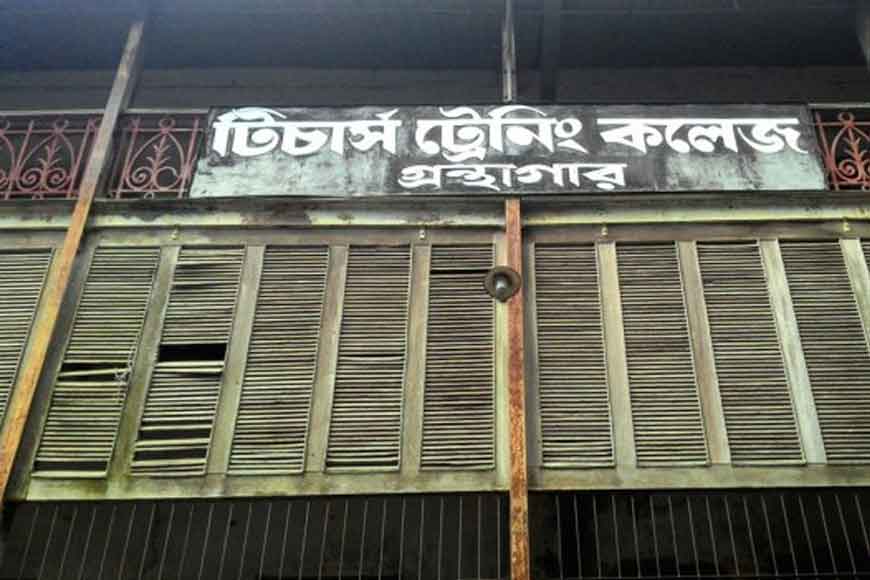Alexander Castle -- Where Rabindranath Tagore was invited by Muktagachha zamindars - GetBengal story

A soft glow illuminates the pristine sky as dusk descends, interrupted only by the non-stop chirping of birds returning to their nests. A pall of gloom sets in gradually. Nestled amid huge evergreen trees, a magnificent two-storied worn-out tin-shed ‘castle,’ raises its head proudly. The architectural beauty of this unique structure transports beholders to the bygone era of splendor and riches. Located at the heart of Mymensingha city in Bangladesh, Alexander Castle looks so familiar yet so distant and aloof, like a hermit meditating in isolation.

Alexander Castle, also known as ‘Lohar Kuthi’ or ‘Rang Mahal’ is lavishly spread across 27.50 acres of land close to Mymensingha Court building. Maharaja Suryakanta Acharya Chowdhury , former landlord (Zamindar) of Muktagachha constructed the imposing castle in the heart of Mymensingha town in 1879 during the Jubilee Festival and named the castle in the memory of the first District Collector, N.S. Alexander. The castle was constructed at a whooping cost of Rs 45,000 in those days! Before the majestic architecture came up, the Acharya Chowdhury zamindars had a garden house (Baganbari) named Shashi Lodge on the plot.
The European-style building is constructed over a high plinth, probably to avoid the flood from the nearby Brahmaputra River. This earthquake-proof steel and timber building was built after Maharaja Suryakanta Acharya Chowdhury’s much esteemed Crystal Palace or Rang Mahal was razed to the ground during the Great Bengal Earthquake of 12 June 1897. The main building has a two-storeyed wooden staircase made of iron, wood and various metallic accessories. The building has so much iron it is still known as the ‘Lohar Kuthi’ locally.
The castle reflects the Maharaja’s aesthetic sense. The sloping roof of the house is made entirely of wrought iron. The wide space between the ground floor and first floor is tastefully done with wooden blinds. The house used to be surrounded by well-manicured gardens with a combination of various rare trees, shrubs, artificial water body, hills, valleys, fountains, various livestock, reptile farms, etc. There are two majestic Greek sculptures in white, both fine specimens of ancient Greek art, placed on either side of the main entrance. Decades of negligence have left their mark on the statues that stand with dismembered hands, as legacy of a rich past. There were many such exquisite sculptures strewn around the vast open gardens.

The building has 14 rooms in all, seven on the ground and an equal number on the first floor. Now the first floor has been abandoned as it is in a precarious condition. Maharaja Shashi Kanta Acharya Chowdhury built this castle as a rest house for his VIP guests. Many renowned personalities from different walks of life visited the castle as Maharaja’s guests and spent a couple of days there. The dignitaries included such bigwigs as Lord Curzon, Russian Grand Duke Boris, George White, the then Chief Justice of India, Cromer Pathram, Chief Justice of India, Chittaranjan Das, Netaji Subhas Chandra Bose, Nawab Sir Salimullah and Kamal Pasha. In 1926, Mohandas Karamchand Gandhi stayed here. In the same year, poet Rabindranath Tagore went on a visit to Mymensingha on February 15, 1926 and stayed at Alexander Castle as the Maharaja’s guest for four days.
During its heydays, the interior of the castle used to be luxuriously furnished with expensive leather-bound royal furniture and unique antique decorative items procured from around the globe. It is said that the Maharaja used to keep big cats in his garden as pets and the area was surrounded with big steel cages.

After Partition, a Teachers Training College was initiated at Alexandra Castle in 1948. Later, when the college building was further expanded, the authority made the castle as teachers' hostel. Seven rooms on the first floor of the house were used as dormitories for more than 60 years but owing to the dilapidated condition of the first-floor rooms, they were declared unsafe and abandoned for good. Now it houses a library and has a good stock of about 15,000 books well-maintained in the seven rooms on the ground floor of the Castle.










